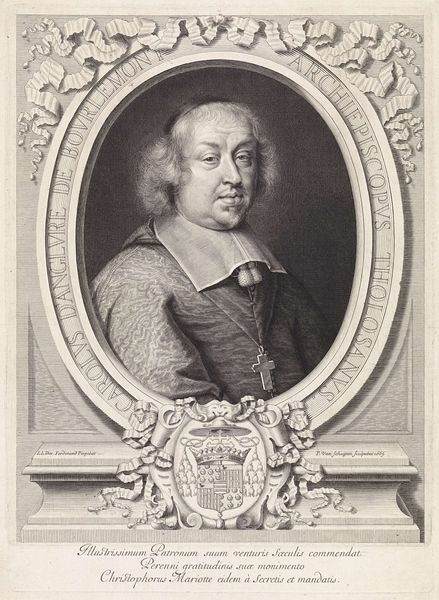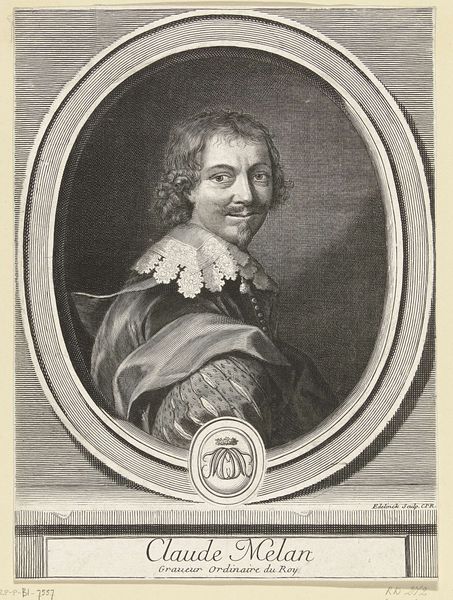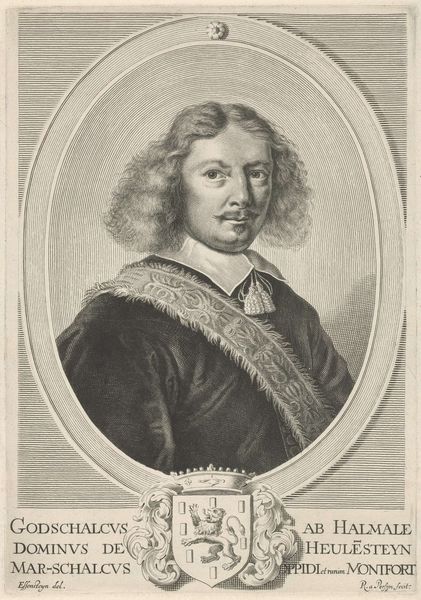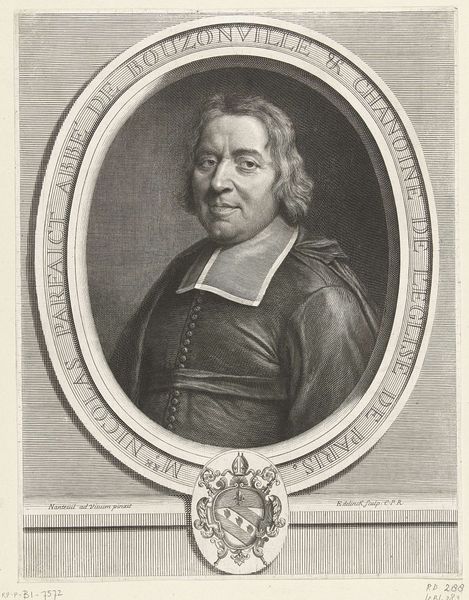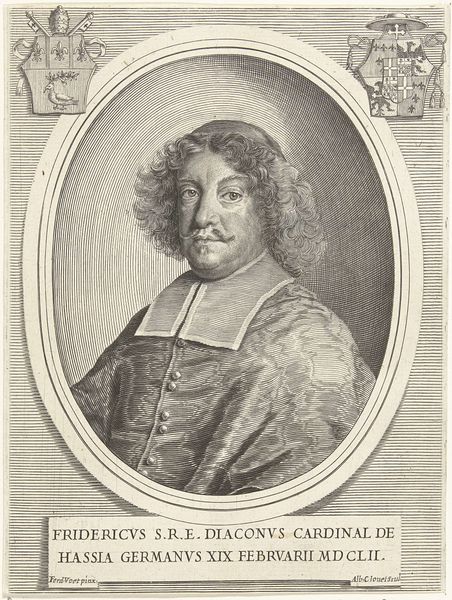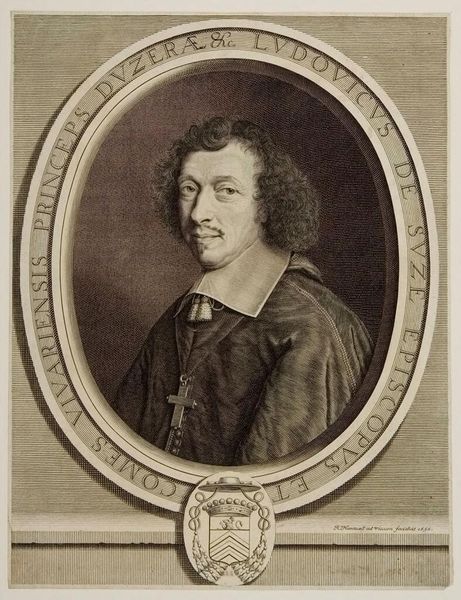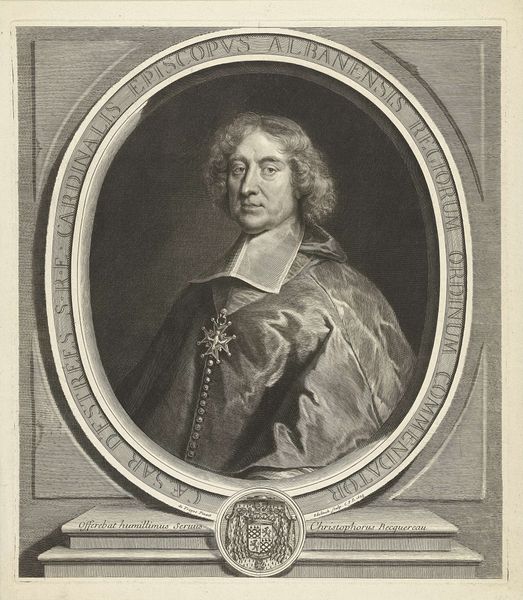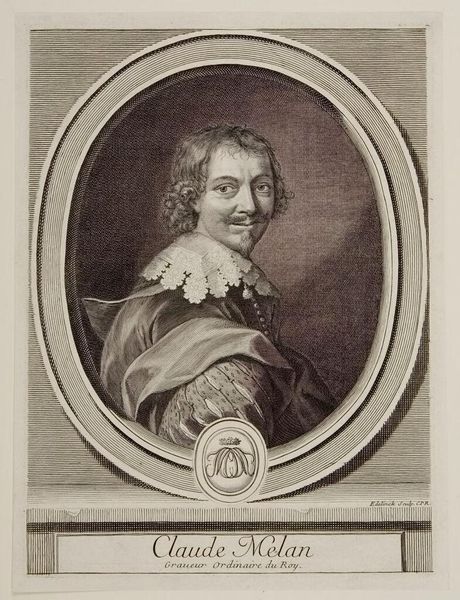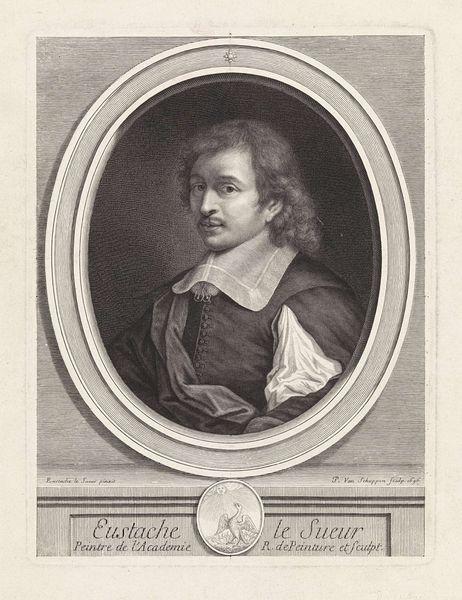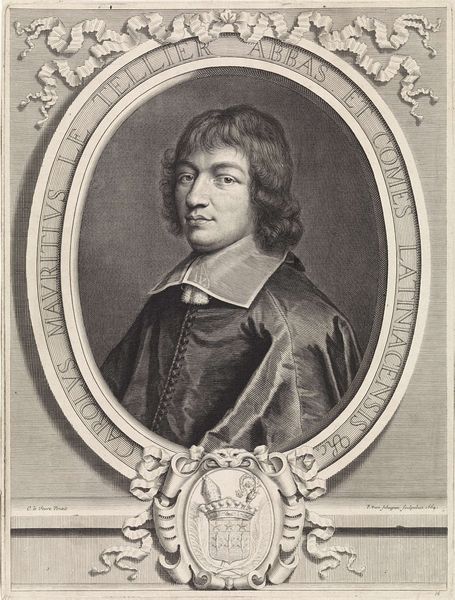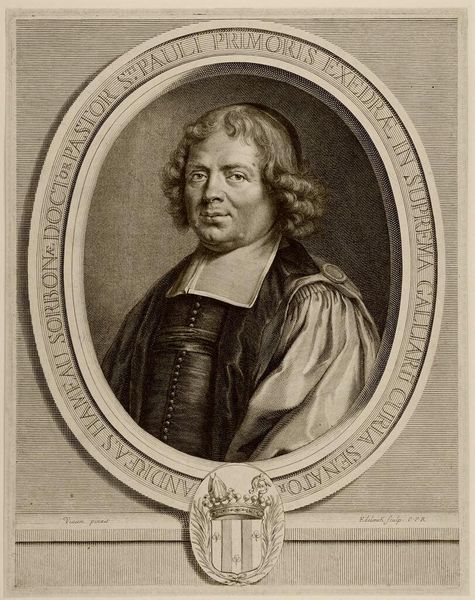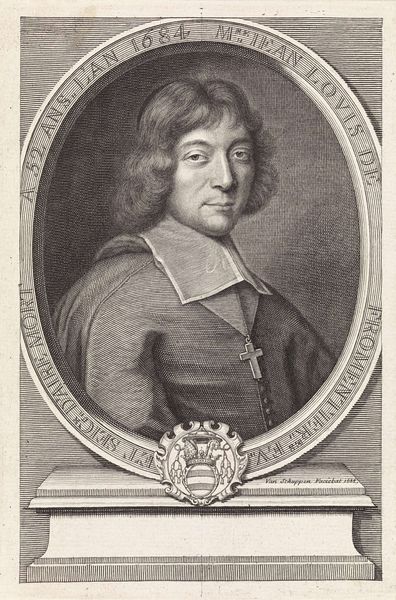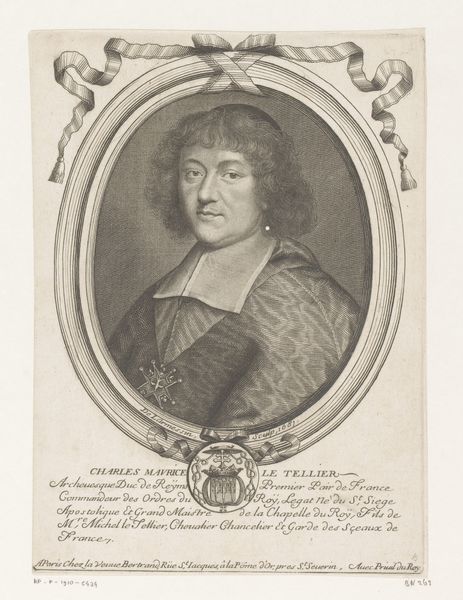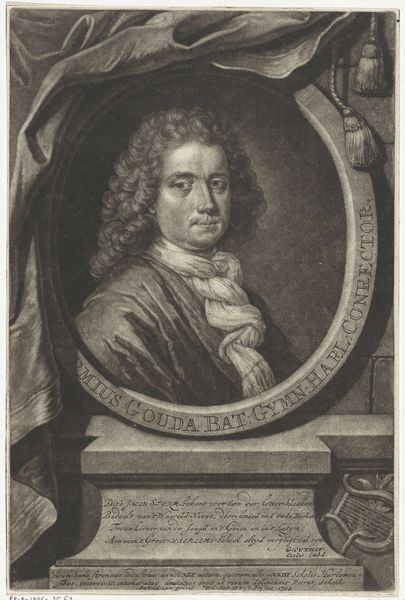
Portret van Jean François Paul de Gondi, kardinaal van Retz 1662 - 1668
0:00
0:00
pietervanschuppen
Rijksmuseum
print, engraving
#
portrait
#
baroque
# print
#
old engraving style
#
historical photography
#
history-painting
#
engraving
Dimensions: height 340 mm, width 273 mm
Copyright: Rijks Museum: Open Domain
Editor: So, this is a portrait of Jean François Paul de Gondi, Cardinal of Retz, by Pieter van Schuppen. It was made between 1662 and 1668 and is an engraving. It has that old-world, baroque feel. What strikes me is the intricate detail achievable through printmaking techniques of the time. What are your thoughts on this piece? Curator: Look closely at the labour involved in creating this print. Consider the artist's process: the cutting of the image into a metal plate, the meticulous process of inking and printing. The resulting image, this "Portret van Jean François Paul de Gondi," then circulates widely. This speaks to the democratizing potential of printmaking as a method for disseminating power and knowledge. How do the materials and means of production here inform your understanding of the sitter, the Cardinal? Editor: I see what you mean. It's not just about representing the Cardinal but about reproducing and distributing that image. I hadn’t really considered the social impact of that choice of medium. The availability changes the meaning! But did the material—the print itself—carry a different kind of prestige than, say, a painting would have? Curator: Absolutely. While paintings might denote unique, individualized patronage and value, prints participated in a different economy. They enabled the burgeoning middle class to engage with portraiture and claim proximity to power through acquisition and display. We must not overlook this portrait's production as a carefully crafted commodity. Consider also the engraver, van Schuppen. His skill and labor are equally present in the image, are they not? Editor: It's almost like he's co-signing the Cardinal's importance by lending his craft to it. I hadn't thought about it that way, that it wasn't just about the art *subject* but also about the art object and its reach within the social landscape. Thank you. Curator: Indeed. By examining the means of production and consumption of this portrait, we gain a more nuanced understanding of its role within 17th-century society.
Comments
No comments
Be the first to comment and join the conversation on the ultimate creative platform.
